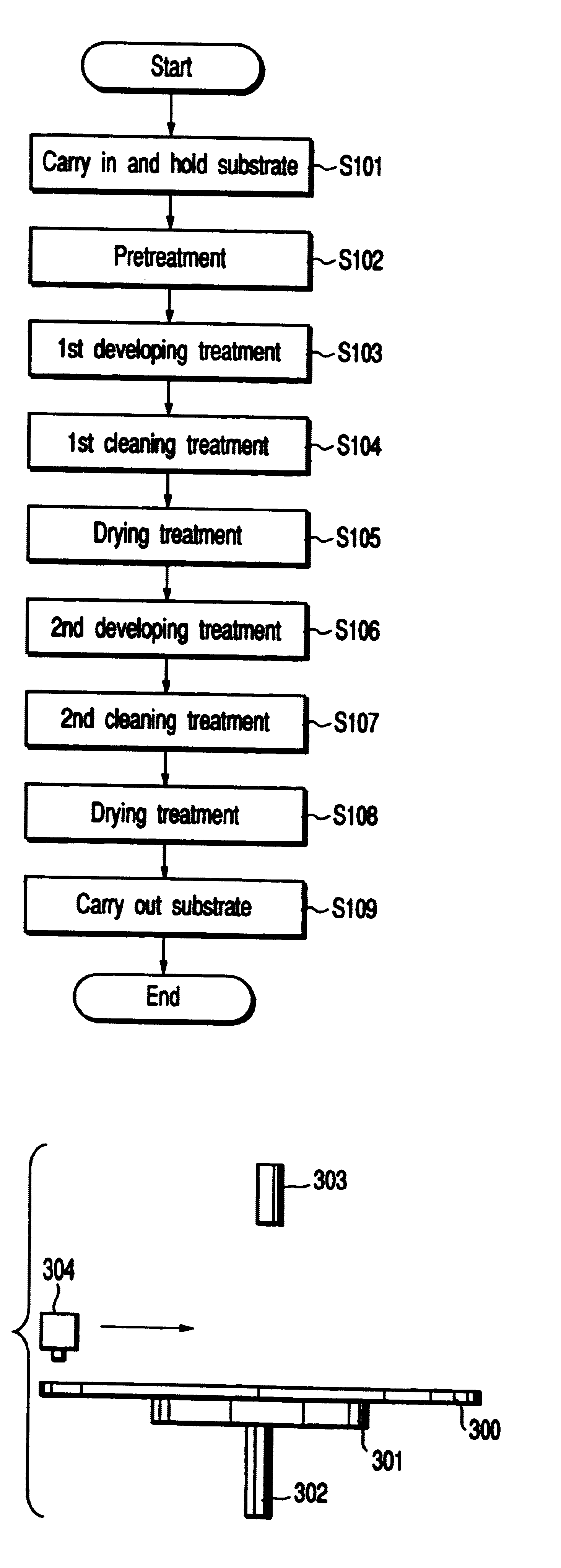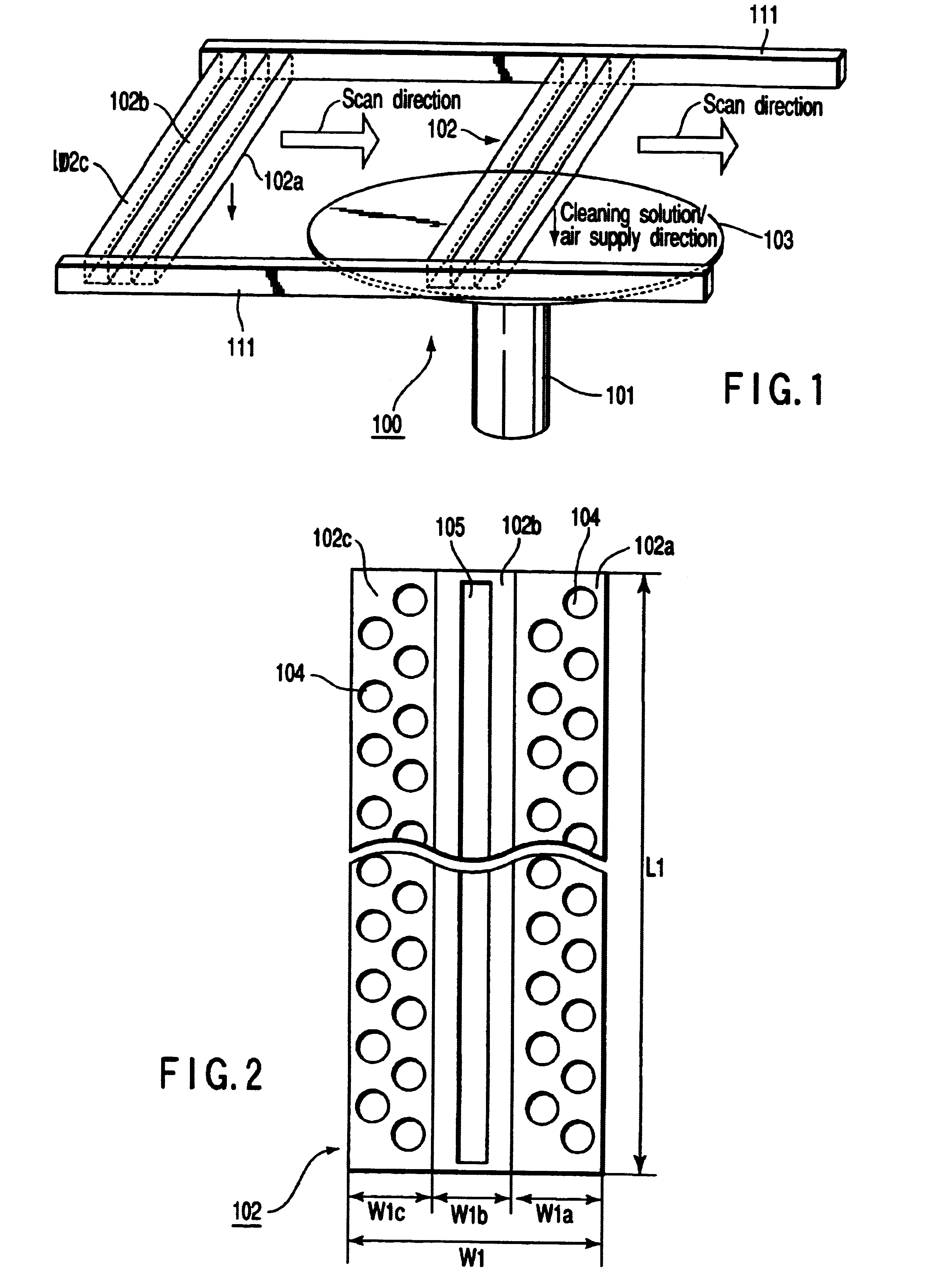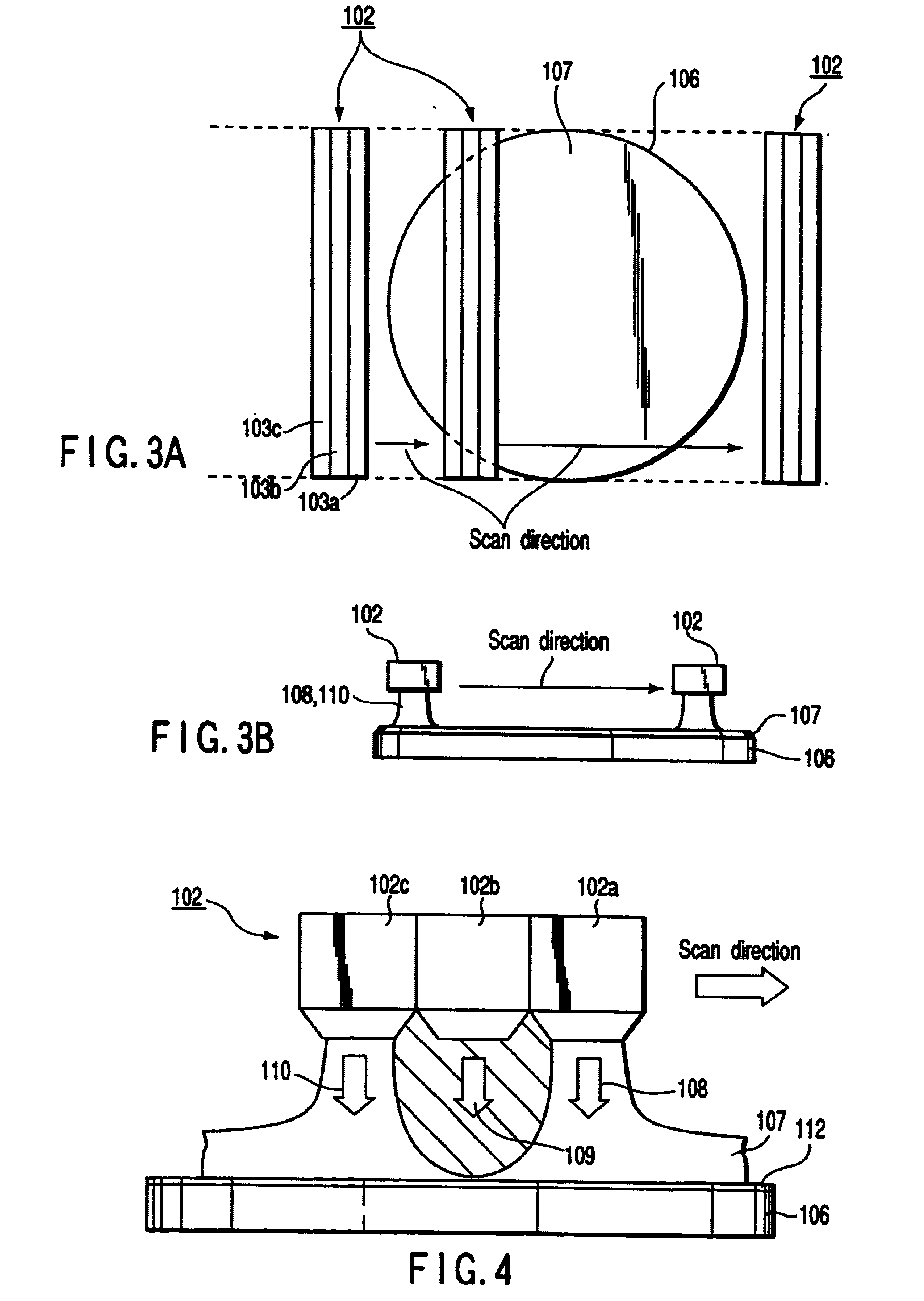Substrate treating method, substrate-processing apparatus, developing method, method of manufacturing a semiconductor device, and method of cleaning a developing solution nozzle
- Summary
- Abstract
- Description
- Claims
- Application Information
AI Technical Summary
Problems solved by technology
Method used
Image
Examples
second embodiment
[0120] In the present embodiment, the developing, cleaning, and drying treatments are performed in order to form the pattern which has a predetermined dimension and shape in the region to be treated of the substrate in the same manner as in the first embodiment. Moreover, in the present embodiment, a so-called developing treatment apparatus of a single wafer process system is used in which one substrate can continuously be subjected to the process of the developing, cleaning, and drying treatments in one apparatus.
[0121] A treatment unit which can continuously perform the developing, cleaning, and drying treatments with respect to the substrate is disposed in the developing treatment apparatus. In the present embodiment, each corresponding treating mechanism is used to perform a series of processes of the developing, cleaning, and drying treatments in this treating unit.
[0122] As one example, the developing treatment mechanism is disposed to perform the known scan developing treatme...
third embodiment
[0198] FIG. 11 is a diagram showing a flowchart of a treating procedure of the developing treatment method according to a third embodiment of the present invention. Moreover, FIGS. 12 to 16 are process diagrams showing the treating procedure of the developing treatment method according to the third embodiment of the present invention.
[0199] A developing method according to the third embodiment of the present invention will be described with reference to FIGS. 11 to 16.
[0200] (Step S101)
[0201] As shown in FIG. 12, a main surface of a substrate 300 including the semiconductor substrate is coated with the resist of the chemical amplification type (photosensitive resist film) via the reflection preventive film, and KrF excimer laser is used in the chemical amplification type resist film to reduce / project / expose a circuit pattern via a reticle for exposure. The substrate 300 is subjected to PEB treatment. Subsequently, a transfer robot transfers the substrate 300 into an upper part of a ...
fourth embodiment
[0250] FIG. 19 is a diagram showing a flowchart of the development treating procedure according to a fourth embodiment of the present invention.
[0251] Since steps S201 to S203 are similar to the steps S101 to S103 described in the third embodiment, the description thereof is omitted.
[0252] (Steps S204, S205)
[0253] The low-concentration ozone water was discharged from the rinse nozzle in about five seconds after the developing solution film was formed in the substrate main surface in step S203. Subsequently, the substrate was rotated, and almost all the cleaning solution was removed, but without drying the substrate, the cleaning solution was slightly left, and the ozone water film was formed.
[0254] (Step S206)
[0255] Subsequently, the developing solution for processing the resist film on the substrate was formed on the substrate in which the ozone water film was formed. The forming method of the developing solution film is similar to that of the third embodiment.
[0256] Since steps S2...
PUM
| Property | Measurement | Unit |
|---|---|---|
| Fraction | aaaaa | aaaaa |
| Length | aaaaa | aaaaa |
| Time | aaaaa | aaaaa |
Abstract
Description
Claims
Application Information
 Login to View More
Login to View More - R&D
- Intellectual Property
- Life Sciences
- Materials
- Tech Scout
- Unparalleled Data Quality
- Higher Quality Content
- 60% Fewer Hallucinations
Browse by: Latest US Patents, China's latest patents, Technical Efficacy Thesaurus, Application Domain, Technology Topic, Popular Technical Reports.
© 2025 PatSnap. All rights reserved.Legal|Privacy policy|Modern Slavery Act Transparency Statement|Sitemap|About US| Contact US: help@patsnap.com



